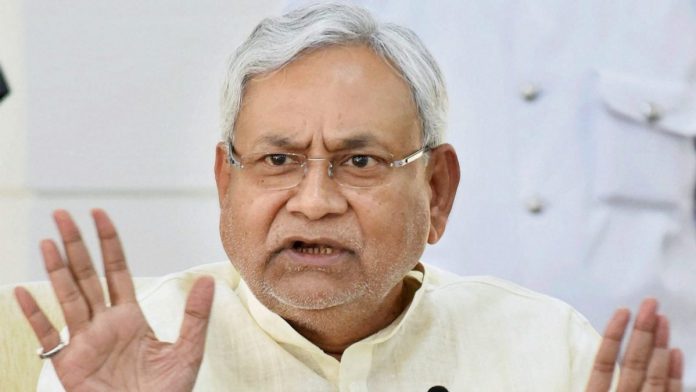New Delhi: The recent Bihar Public Service Commission (BPSC) examination paper leak had brought to the forefront the state government
“Education is a primary indicator which defines any state’s progress and its overall development. Any state which wants to do exceptionally well needs to do tremendously in the education sector. But sadly, the state of Bihar under Nitish Kumar’s rule has failed miserably as far as the education system is concerned. More than 2,00,000 posts are vacant in Bihar’s government schools. University system had collapsed. Vice- Chancellors of many universities have faced serious charges of monetary misconduct. The undergraduate degree which is for a three-year period gets completed in Bihar in five years. Those who can afford and are from upper middle class backgrounds go to Pune, Kota and New Delhi for higher education. I can challenge anyone that more than 50% of students who are preparing in Kota for the engineering and pre-medical examinations are from Bihar. The hard earned-money of the state is contributing to other states’ GDP,” said Binod Kumar Choudhary, a retired professor under Muzaffarpur’s Babasaheb Bhimrao Ambedkar Bihar University (BRABU). Many recent reports have validated the same. The recent Annual Survey of Educational Research (ASER) report revealed that all was not well as far as Bihar’s education system is concerned. The ASER report showed that 17% of Class VIII in rural schools could not recognise digits, 15% could not identify numbers between 10 and 99, while 0.5% could not read capital letters in English and 1.2% could not read even small letters. Bihar is the third largest state population-wise and has India’s second largest population aged five to 14, but the government spending is lowest per student. As the country’s third most populous state, with the population of more than 100 million people; Bihar’s literacy rate (61.8%) is among the country’s lowest; and the female literacy rate (51.5%) is the second lowest, according to the Census of 2011.
Many experts also believe that to blame the state government for the failure is not right. “The society of Bihar had also a major role in this structural collapse of the education sector.
Many guardians promote candidates to enroll as “flying candidates” from schools, meaning that they are doing coaching from class nine in some other part of the country, but are enrolled on paper in the state’s schools affiliated to Central Board of Secondary Education (CBSE) and Bihar State Education Board (BSEB). You cannot blame the government for that, the corruption is at every level,” said Nalini Ranjan Sinha, an educationist who runs a private school.
Bihar’s education system is in deep crisis
इस शब्द का अर्थ जानिये
- Advertisement -

